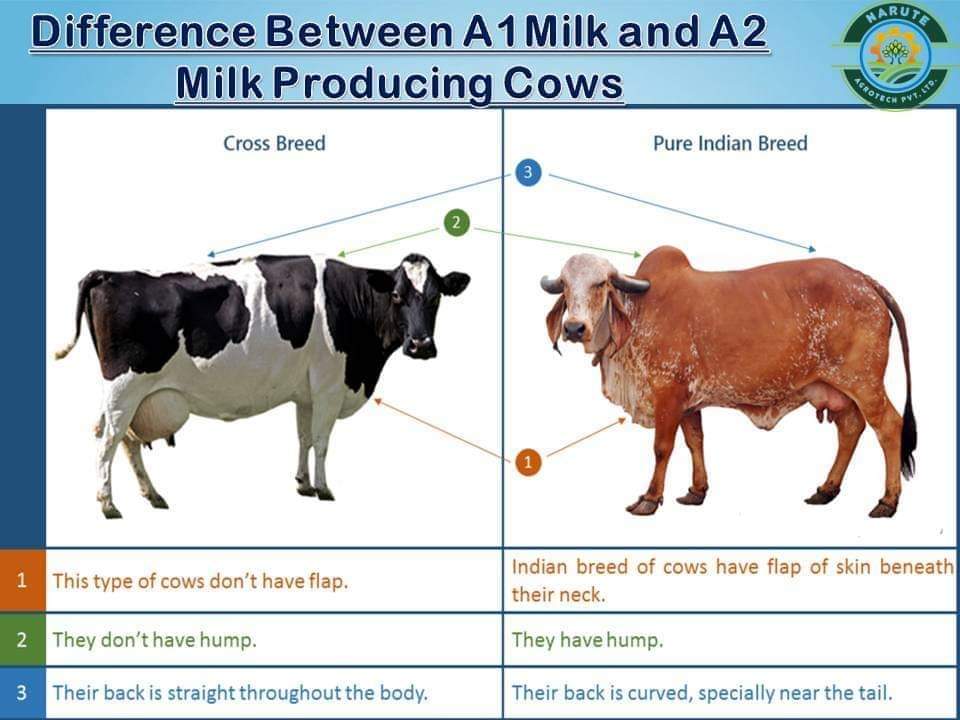NUTRITIONAL COMPARISON OF A1 AND A2 MILK IN INDIA
Dr. Ashvini.P. Bansod, Dr. Abhilash D. Jadhao, Dr. Pratik R. Jadhav
Milk is a word which is importantin hindu ved also. In hindudism, cow is considered as mother of all animals. In ancient time, milk is used as home remedie for many diseases because of its nutritional importance. From that time, various goshala were constructed and clean milk production was continued. Operation flood programme was started in 1970 in which 700 towns were linked for milk production and that was the success of white revolution. In 20th century, milk is essential part of life in day to day life. Child prefer milk and milk products. Gujrat lead in India for milk production and various scientific studies were carried out for milk production. Studies were done on composition of milk and their nutitional importance. High milk producing cows were reared like Jersy and Holstein. Milk from various animals have different composition. In general, composition of milk contain water 87.7 %, 4.9% lactose, 3.4% fat, 3.3% protein and 0.7 % minerals. According to its composition, nutritive value of milk is decided according species. As think about the protein content of milk which is casein that promote tissue growth and development. A1and A2are two proteins in casein family which decide the quality of milk.
Importance of A1and A2:
These are two proteins in casein family which contain 209 amino acids and makes up about 80% of protein of cow’ s milk and 1/3rd of all proteins in human milk. A1and A2are differfrom each other by 67 amino acid in chain and representing 27% of total protein and enclosed by the CSN2 gene mapped on chromosome 6q31. A1linked to histidine and A2 linked toproline. Milk has numerous types of casein and beta casein is the second most common type casein in cow’s milk and it comes in 13 different forms with molecular mass of about 24k Da. Beta-casein (BC) has affect on biological activities on immune, cardiovascular, gastrointestinal and central nervous systems . BC is the second most abundant protein in cow’s milk representing 27% of total protein. If one amino acid is change then A1is broken down and create BCM-7 (beta Casomorphine) which belong to opiate family which have harmful effect when inject into blood of animal’s body. There is an ongoing debate about the nutritional value of both A1 and A2 milk. But from some research work it proof thatA2milk have more nutritional value than A1. A1cause lactose intolerance and other health issue due to their BCM-7 property. Due to consumption of A1milk, Type 1 Dibeties mellietus, Coronory heart disease, Autistic spectral disorder (ASD), Sudden infant death syndrome , autism means is disabilities including problems with social interaction, communication and repetitive behaviors.In Australia, United states and Northern Europe cattle breeds like Holstein Friesian, Ayrshire and British Shorthorn produce A1beta casein milk whereas A2 beta-casein is protein found in milk produced by cows like the Jersey, Charolais, Guernsey and Limousin.Due to harmful effect of A1milk, people prefer A2milk. A2milk iseasy to absorb and digest. A2milk can obtained from indigenous cow which give less milk as compare to exotic cow. In Market, A few of the A2milk brands are Amul Deshi, Desigo, Haritas, GoShrushti which are expensive than A1milk.
How to produce milk containing BC A2 from BC A1 (BC A2 milk) :
Due to the benefits of A2 milk, various researches were done for producing Milk containing BC A2 free from BC A1 by using genetically selected CSN2 A2A2 Jersey cows (BC A2 milk). Furthermore, scientists try to develop an IF suitable for healthy full-term infants during the first six months of life based on BC A2 milk. Breeding for A2A2 cows is based on using semen for bulls that have been tested as being A2A2. The breeding process can be speeded up by selective culling of A1A1 and A1A2 cows and by selective retention of A2A2 calves.



